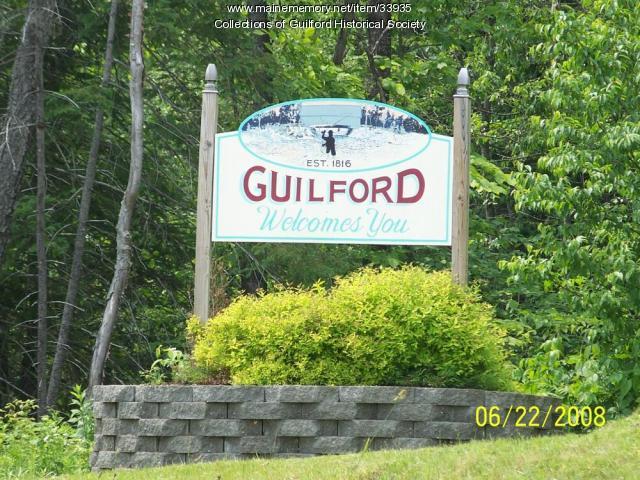Keywords: forge
Item 17522
Washington at Valley Forge, 1777
Contributed by: Maine Historical Society Date: 1777 Location: Valley Forge Media: Digital image
Item 19557
Iron tongs, Stockholm. ca. 1940
Contributed by: Stockholm Historical Society Date: circa 1940 Location: Stockholm Media: Iron
Item 53372
127-153 Fore Street, Portland, 1924
Owner in 1924: Thomas Laughlin Company Use: Shop - Forge
Item 53375
21 Hancock Street, Portland, 1924
Owner in 1924: Thomas Laughlin Company Use: Shop - Forge
Exhibit
A Soldier's Declaration of Independence
William Bayley of Falmouth (Portland) was a soldier in the Continental Army, seeing service at Ticonderoga, Valley Forge, Monmouth Court House, and Saratoga, among other locations. His letters home to his mother reveal much about the economic hardships experienced by both soldiers and those at home.
Exhibit
Princeton: Woods and Water Built This Town
Princeton benefited from its location on a river -- the St. Croix -- that was useful for transportation of people and lumber and for powering mills as well as on its proximity to forests.
Site Page
"… a former age to explore the times and trials that forged our collective character. Learn about our people, from the early settlers, farmers, and…"
Site Page
"… of the American Revolution, including Valley Forge, the Battle of Monmouth, and Cornwallis’s Surrender at Yorktown."
Lesson Plan
Longfellow Studies: Longfellow Meets German Radical Poet Ferdinand Freiligrath
Grade Level: 9-12
Content Area: English Language Arts, Social Studies
During Longfellow's 1842 travels in Germany he made the acquaintance of the politically radical Ferdinand Freiligrath, one of the influential voices calling for social revolution in his country. It is suggested that this association with Freiligrath along with his return visit with Charles Dickens influenced Longfellow's slavery poems. This essay traces Longfellow's interest in the German poet, Freiligrath's development as a radical poetic voice, and Longfellow's subsequent visit with Charles Dickens. Samples of verse and prose are provided to illustrate each writer's social conscience.
Lesson Plan
Grade Level: 9-12
Content Area: Social Studies, Visual & Performing Arts
When European settlers began coming to the wilderness of North America, they did not have a vision that included changing their lifestyle. The plan was to set up self-contained communities where their version of European life could be lived. In the introduction to The Crucible, Arthur Miller even goes as far as saying that the Puritans believed the American forest to be the last stronghold of Satan on this Earth. When Roger Chillingworth shows up in The Scarlet Letter's second chapter, he is welcomed away from life with "the heathen folk" and into "a land where iniquity is searched out, and punished in the sight of rulers and people." In fact, as history's proven, they believed that the continent could be changed to accommodate their interests. Whether their plans were enacted in the name of God, the King, or commerce and economics, the changes always included and still do to this day - the taming of the geographic, human, and animal environments that were here beforehand.
It seems that this has always been an issue that polarizes people. Some believe that the landscape should be left intact as much as possible while others believe that the world will inevitably move on in the name of progress for the benefit of mankind. In F. Scott Fitzgerald's The Great Gatsby a book which many feel is one of the best portrayals of our American reality - the narrator, Nick Carraway, looks upon this progress with cynicism when he ends his narrative by pondering the transformation of "the fresh green breast of a new world" that the initial settlers found on the shores of the continent into a modern society that unsettlingly reminds him of something out of a "night scene by El Greco."
Philosophically, the notions of progress, civilization, and scientific advancement are not only entirely subjective, but also rest upon the belief that things are not acceptable as they are. Europeans came here hoping for a better life, and it doesn't seem like we've stopped looking. Again, to quote Fitzgerald, it's the elusive green light and the "orgiastic future" that we've always hoped to find. Our problem has always been our stoic belief system. We cannot seem to find peace in the world either as we've found it or as someone else may have envisioned it. As an example, in Miller's The Crucible, his Judge Danforth says that: "You're either for this court or against this court." He will not allow for alternative perspectives. George W. Bush, in 2002, said that: "You're either for us or against us. There is no middle ground in the war on terror." The frontier -- be it a wilderness of physical, religious, or political nature -- has always frightened Americans.
As it's portrayed in the following bits of literature and artwork, the frontier is a doomed place waiting for white, cultured, Europeans to "fix" it. Anything outside of their society is not just different, but unacceptable. The lesson plan included will introduce a few examples of 19th century portrayal of the American forest as a wilderness that people feel needs to be hesitantly looked upon. Fortunately, though, the forest seems to turn no one away. Nature likes all of its creatures, whether or not the favor is returned.
While I am not providing actual activities and daily plans, the following information can serve as a rather detailed explanation of things which can combine in any fashion you'd like as a group of lessons.














